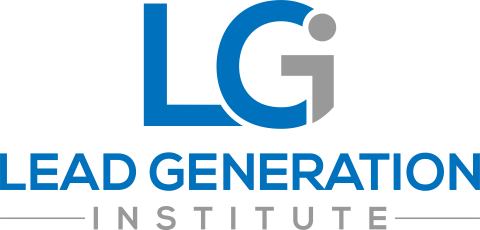B2B marketing teams are faced with an increasing number of challenges entering the 2020s. At the most basic level, they need to be developing buyer personas, creating relevant and insightful content, doing market analysis, monitoring online activities, creating and optimizing conversion pipelines, and more. And even after doing all of this work, there is no real guarantee that their marketing campaign will be successful.
Today’s ever-evolving technological innovations can easily make any marketing strategy obsolete halfway through its execution. Staying ahead, however, will require B2B marketing and sales teams to anticipate and capitalize on future trends before they become a reality. This is where intent data comes into play. It allows B2B companies to get a deeper insight into the wants and needs of prospective buyers and target accounts, helping them create more effective marketing and sales campaigns.
What Is B2B Intent Data?
In its most basic form, intent data for B2B companies refers to a collection of information about the content consumption and behavior of a prospect or company. There are also two types of data collection that fall into this category.
First-party data is mostly internal and is derived from the activities your organization captures directly from your website, CRM software, or marketing automation platform (MAP). The main benefit of first-party data is that it collects data every time a lead is exhibiting a buying signal or interacts with your brand. Some examples of first-party intent data include things like tracking website visits, the time spent on your site, content downloads or form fills, links they clicked on in an email, and more. Marketers use these behaviors to generate a customer or prospect profile to identify B2B buyers’ intent to make a purchase.
Another type of intent data is external, more commonly known as third-party data. This information is collected by different publishers and ad networks to be sold to B2B companies. Third-party intent data is collected by tracking IP addresses, website cookies, or by monitoring user online behavior and the ads that are being served to them. It’s great for marketers to understand the target audiences’ external content consumption, as well as their online behavior. Third-party data is generally used for identifying possible buyers, running targeted ads, account-based marketing, and creating personalized content.
Keep in mind that third-party intent data, can be less accurate when it comes to predictive insights on a prospect because of VPN use, proxy servers, and cookie blocking, but will still add a certain degree of value to the overall intent data model.
Regardless, when using intent data to refine their target audiences and execute their demand generation campaigns, B2Bs can see an increase in their deal velocity, lead conversion, and pipeline creation. As previously stated, [bctt tweet=”the value of intent data is that it allows companies to predict their prospects’ buying behavior.” username=”LeadGenInst”]
Intent monitoring platforms, such as DemandBase, Bombora, or 6sense, among others, will track activities surrounding topics related to your company’s products and services, uncovering prospects that can be added to your target account list. These monitoring platforms will also analyze the online activities of individual contacts within target accounts.
If they start searching specific keywords, downloading certain resources, reading certain articles and/or publications, participating in topic-specific forums, and other relevant actions, there’s a strong possibility that there may be an impending buying decision. When these types of activities begin to spike, monitoring platforms will alert marketers, allowing them to respond even before the intent to buy is expressed.
First and Third-Party B2B Intent Data Uses
Both types of data have their own specific use cases where they shine the most. For example, first-party intent data allows B2B organizations to rank their leads into different tiers based on how well they match the firmographics and demographics of their current customers. You can further break that firmographic and demographic information down into specific products or services. Marketing and sales teams can also better distinguish between low and high-quality leads, which are most likely to make a purchase.
This information can be used in combination with the CRM or MAP to trigger preset events, such as sending out emails, scheduling outbound calls, sending snail mail, and more.. Likewise, first-party data can also help marketers determine which campaigns drive revenue and engagements and which are a waste of resources.
Third-party intent data, on the other hand, can be used to discover which accounts and/or individual prospects are researching industry-specific topics across the internet. This information can later be used to design improved, personalized marketing campaigns based on that content consumption. In addition, third-party data can also be used to improve the accuracy and relevancy of targeted ad campaigns.
The combination of these two data sources is where the magic really happens.
B2B Intent Scoring
If we are to look at a traditional lead scoring model, much of the work is done using marketing automation platforms that track page views on our website, clicks, email opens and form fills. In such a system, a given lead’s score points are based on certain predefined criteria. As an example you might give a prospect 2 points for visiting a web page and 10 points for downloading a whitepaper or filling out a form on your website.
However, such a traditional model doesn’t account for that prospect’s entire online activity. So sales and marketing teams that are using this system need to base their lead scores on significant guesswork, which can oftentimes be misleading or even deceptive.
To get a more accurate picture of our prospects and our target account list you should combine both intent data and predictive analytics. Intent data can give you a picture of a company or prospect’s content consumption while predictive analytics can tell you which companies match your best customers’ ideal profile (usually the most profitable customers). At Eloqua, we called this co-dynamic, lead scoring, where you score prospects based on their implicit behavior and their explicit data (demographics). Think of predictive analytics as a way to help you collect explicit data on the accounts you should be going after.
Predictive Analytics and Intent Monitoring
Predictive analytics augments explicit data by going beyond a company’s firmographic profile. It does this by analyzing a company’s behavior both online and offline. Predictive analytics looks at things like business performance. It answers important questions like, is this company growing or reducing in size and revenue? Are they buying or merging with other companies? Are they hiring more staff or laying off staff? What kind of open job requisitions do they have? What types of resources is this company consuming? What do the latest press releases say about this company? These insights provide a predictive picture into their future behavior. Used in combination with your lead-scoring model it can provide greater accuracy in determining if and when a prospect or company will start showing purchase intent. It can also show when prospects will be ready to buy and the context in which this will occur.
Predictive analytics makes predictions about possible future events. It utilizes statistics, modeling, artificial intelligence, machine learning, and data mining to anticipate which companies are more likely to buy what and when. The biggest challenge with predictive analytics is that it relies heavily on past events to “foretell” the future. The idea is that by collecting and identifying past actions and behaviors of your best customers, it will help improve your chances of finding similar companies in the near future.
Unlike predictive analytics, intent data does not rely on complex models and custom algorithms. Intent data can also alert B2B marketing and sales teams of potential customers that didn’t yet make it on their radar.
If you want to learn more about intent or predictive data, subscribe to our newsletter and get the latest news delivered to your inbox.




